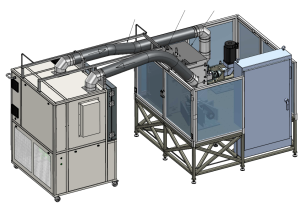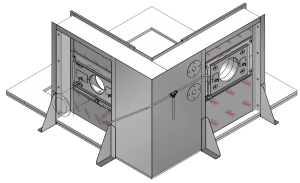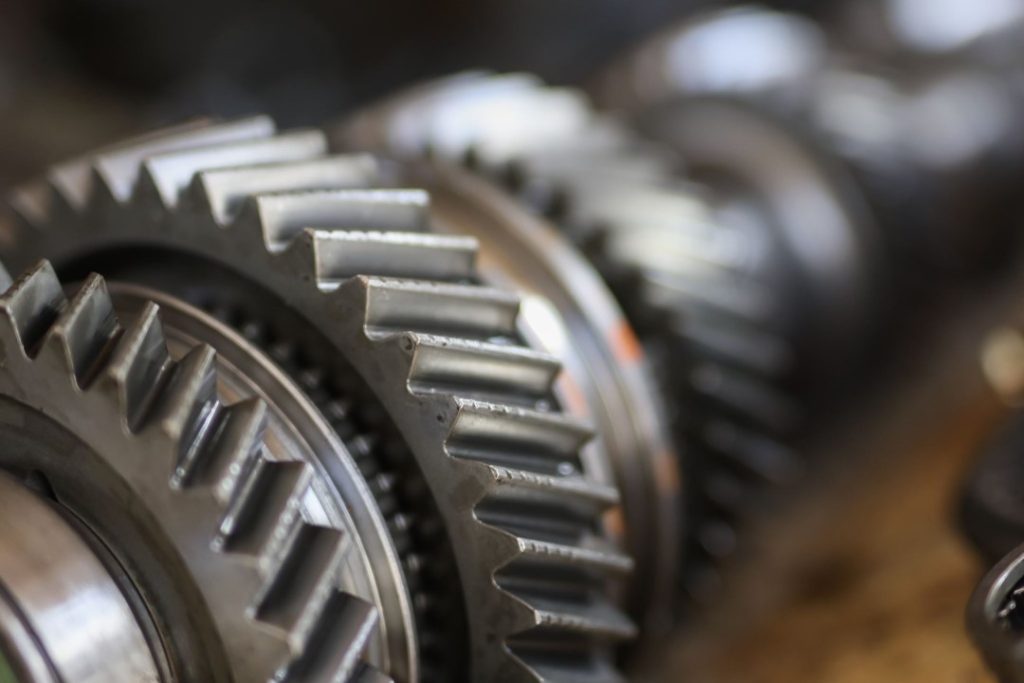Gearboxes for vehicle steering systems are an essential component whose reliability must be tested under a wide range of environmental conditions (+120 to –40°C is not uncommon). Realistic testing requires that gearboxes are connected to other mechanical assemblies and then operated. To perform such testing under controlled conditions, the gearbox must be inside an environmental chamber, but the position and angles of the input and output drive shafts are highly variable for different gearbox designs.
This difficulty has often led to bespoke chambers being constructed for each specific model of gearbox, a costly and inefficient approach for a gearbox manufacturer or test laboratory. However, using a generic chamber poses a considerable challenge in achieving a wellsealed and therefore precisely controllable atmosphere for testing.
Sharetree works extensively with companies in the automotive and oil/gas industries with a need to rigorously test such mechanical devices, and so they decided to design and build an environmental chamber which would be quickly and easily configurable to fit a whole range of gearboxes.
Where thermal and mechanical processes meet
The concept of the gearbox testing assembly was a ‘box within a box’ – a small safety enclosure in which the configurable chamber for the gearbox under test was located. The safety enclosure contained the mechanisms to drive, and be driven by, the gearbox. The gearbox test chamber was connected to two large air ducts, used for circulating air between the chamber and the adjacent air conditioning unit (ACU) that would provide the temperature control for the testing.

The baseplate of the gearbox test chamber was fitted with a suitable mount for holding the gearbox. Then the chamber was assembled from separate wall and roof panels, all clamped together with airtight seals between the joints. In two of the adjacent walls, configurable ports were fitted. These comprised a clamp through which the drive shaft was passed, which was designed to be a close fit to the shaft but not to apply any friction or drag to it while it was operating. With careful design of the clamps, drive shafts up to ±5° from the perpendicular could be accommodated.
The vertical and horizontal positions of these ports were set by packing cut pieces of insulation block around the port and sealing their edges with silicone. This allowed the positions of the ports to be fine-tuned relatively quickly and cheaply to suit the configuration of the gearbox being tested. If necessary, the entire test chamber could be dismantled and rebuilt around a new gearbox design within a short time.

It was essential that the thermal integrity of the test chamber be maintained during the test, in spite of moving parts projecting through its walls. To achieve this, each clamp assembly was equipped with a purge of dry air that was directed into the space around each shaft. This was to prevent moisture entering the chamber and affecting the conditions of the test. It also acted as a thermal barrier to help separate the interior of the chamber from the ambient conditions.
